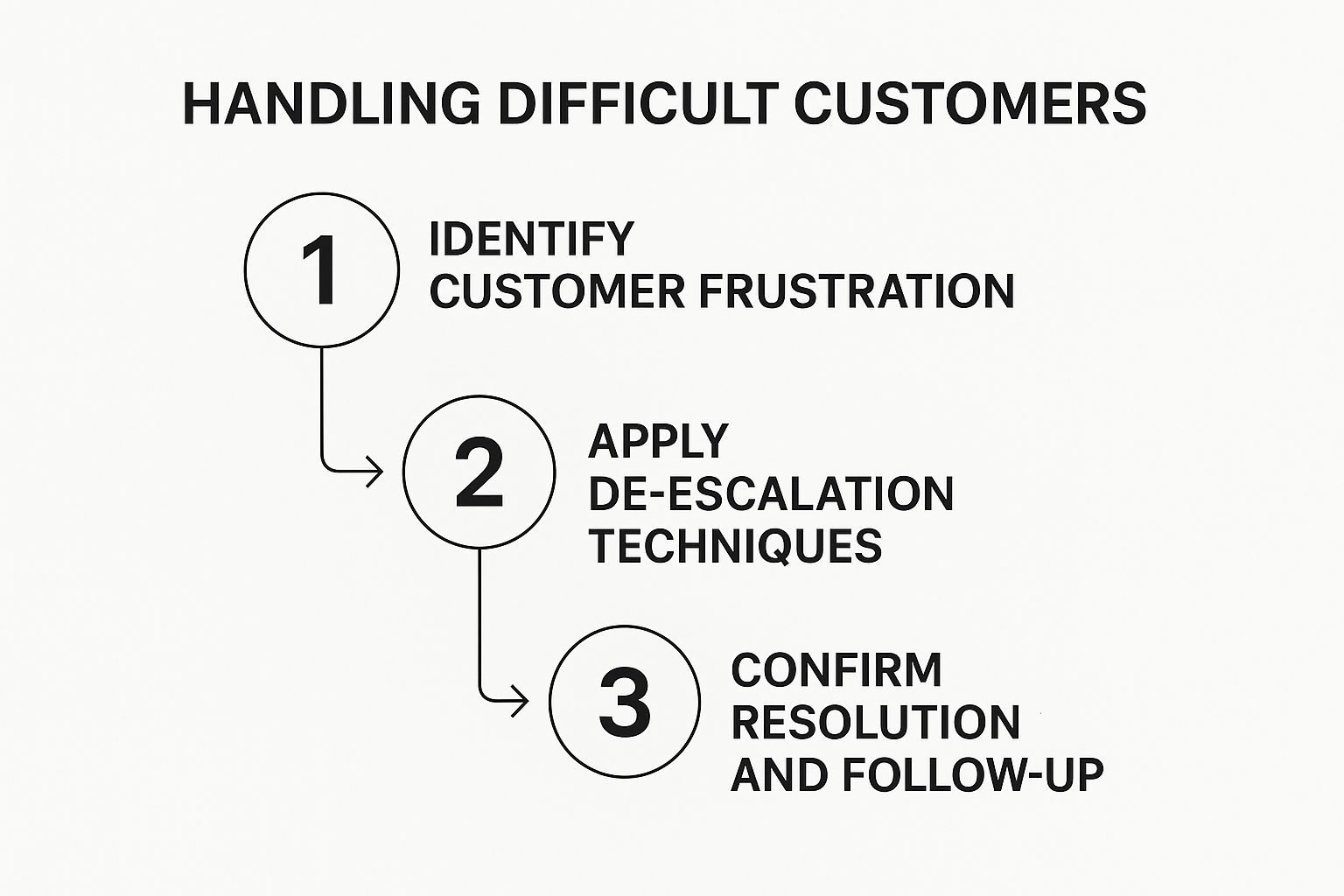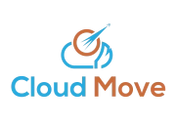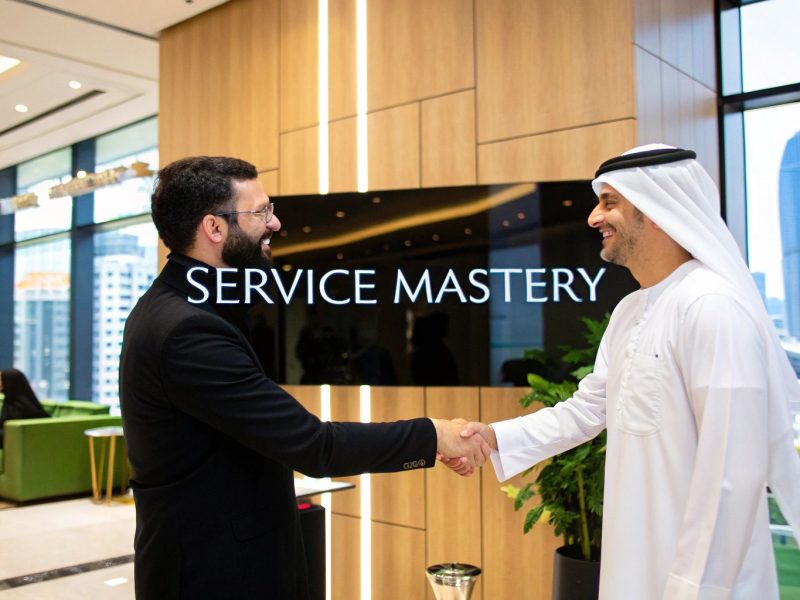What Sets Exceptional Service Teams Apart
Let's be honest, many customer service skills training programmes feel like a box-ticking exercise. They create polite, script-reading representatives who can follow a flowchart but falter the moment a customer conversation goes off-script. Exceptional teams, however, are built differently. They move beyond the superficial and cultivate a culture of genuine problem-solving, and it all starts with acknowledging some uncomfortable truths. The biggest skill gap isn't about knowing the right words to say; it's about the ability to think critically when a customer is frustrated at 5 PM on a Friday.
The difference isn't just about individual talent. Top-tier service teams distinguish themselves not just by personal skill, but also by their commitment to robust knowledge sharing best practices. When one agent discovers a clever workaround or a better way to explain a complex feature, that insight doesn't stay siloed. It's quickly shared, documented, and becomes part of the team's collective intelligence. This collaborative environment fosters growth and ensures consistency, so every customer receives the best possible support, regardless of who they speak to.
Shifting Expectations and Cultural Nuances
Today's customers expect more than just a quick, polite answer. They expect agents to be proactive, empathetic, and resourceful problem-solvers. A training programme that simply teaches agents to be polite is failing them and the business. For example, a customer calling about a billing error isn't just asking for a refund. They're often worried about the financial impact, frustrated by the inconvenience, and seeking reassurance that it won't happen again. A robotic response might correct the bill, but a human-centric approach addresses the underlying emotions, turning a negative experience into a loyalty-building moment.
This is especially true in culturally diverse markets. What works in one region may not translate in another. For instance, the direct communication style common in some Western cultures might be perceived as abrupt in parts of the Middle East, where building rapport is a crucial first step. Recognising and adapting to these cultural nuances is a hallmark of an exceptional team. This growing need for sophisticated service skills is reflected in regional business investment. In the UAE and surrounding areas, the corporate training market was valued at around USD 3.1 billion in 2024 and is projected to grow significantly. This shows a clear business imperative to move beyond basic training. You can discover further market analysis to learn more about this trend.
The Real Skills That Matter
So, what are the warning signs that your current training isn't cutting it?
- High Escalation Rates: If agents frequently need a manager to resolve issues, it suggests they lack the confidence or authority to solve problems themselves.
- Repetitive Queries: When the same questions clog your support channels, it points to a failure in proactive communication and knowledge sharing.
- Stagnant Satisfaction Scores: Polite service might prevent complaints, but it rarely earns glowing reviews or drives customer loyalty.
Exceptional teams focus their customer service skills training on what truly matters: active listening, emotional intelligence, and creative problem-solving. They train agents not just on what the product does, but on how to connect its features to a customer’s unique situation. They empower their teams to go off-script, make decisions, and deliver solutions that don't just solve a problem but also make the customer feel valued and understood.
Building Training Programs That People Actually Remember

Let's be honest, the old way of training—endless slide decks and stiff, generic role-playing—just doesn't stick. The best customer service skills training feels less like a corporate mandate and more like an engaging workshop. It’s designed to be memorable and practical, so your team can apply what they’ve learned the moment they’re back at their desks. The key isn't a massive budget or the latest software; it's about changing how we think about learning itself.
It all starts with an honest look at your team's current skills and defining what success actually means for your business. Instead of vague goals like "improving communication," get specific. Does success mean reducing customer escalations by 15%? Or maybe it's boosting the number of one-call resolutions for a tricky issue. When you have a clear target, you can build a training plan that hits the mark.
This practical approach is gaining traction across the region. Customer service training is a significant part of the corporate training market, particularly in sectors like retail and finance that rely on top-notch frontline service. This growth shows that UAE companies are seriously investing in their people's communication, problem-solving, and product knowledge skills. You can discover more about these corporate training market trends to see how this is shaping business priorities. It’s clear that great training is no longer just a perk; it’s a competitive necessity.
From Theory to Practice: Designing for Retention
The biggest reason traditional training fails is the disconnect between the classroom and the real world. To create a programme people actually remember, the content must be grounded in the daily challenges your team faces. Ditch the generic scripts and use real, anonymised customer interactions from your call logs or CRM. Let your team analyse actual conversations, pinpoint where things went right or wrong, and brainstorm better approaches together. This makes the lessons immediate and relevant.
Remember that people learn in different ways. Some thrive with hands-on practice, while others prefer to observe and analyse. A strong programme will offer a mix of formats to suit everyone.
- Scenario-Based Learning: Use real tickets and call recordings to create lifelike challenges. This bridges the gap between theory and practical application.
- Peer Mentoring: Pair your experienced agents with newer team members. The mentor reinforces their own knowledge, and the mentee gets guidance from a trusted colleague.
- Hybrid Digital Platforms: Use self-paced online modules for foundational knowledge, which frees up in-person sessions for collaborative problem-solving and developing advanced skills.
If you want to create truly effective learning experiences, it's worth exploring instructional design best practices. This provides a solid framework for structuring content to maximise engagement and ensure the lessons stick. Your goal isn't just to teach skills but to cultivate a team of empowered problem-solvers who can think on their feet, not just follow a script.
Comparing Training Methodologies
Choosing the right training method comes down to your team’s specific needs, budget, and how you operate. There's no one-size-fits-all solution; the most effective programmes often mix and match different techniques to create a tailored learning journey.
To help you decide, here is a breakdown of the most common training approaches, outlining their strengths and ideal use cases.
Training Methodology Comparison
A comprehensive comparison of different customer service training approaches, their effectiveness, implementation costs, and best use cases
| Training Method | Effectiveness Rating | Implementation Cost | Time Investment | Best For |
|---|---|---|---|---|
| In-House Workshops | High | Medium | Medium-High | Addressing specific team challenges, building team cohesion. |
| E-Learning Modules | Medium | Low-Medium | Low | Delivering foundational knowledge, product updates, and compliance. |
| Peer Mentoring | High | Low | High (Ongoing) | Reinforcing skills, fostering a supportive culture, onboarding new hires. |
| Scenario-Based Sims | Very High | High | Medium | Developing problem-solving and de-escalation skills in a safe environment. |
| External Consultants | Variable | High | Low-Medium | Introducing fresh perspectives, specialised skills, or a programme reset. |
Ultimately, blending these methods allows you to build a continuous learning environment. You could use e-learning for new product information, follow up with in-house workshops for practical application, and support it all with an ongoing peer mentoring system. This creates a robust programme that supports your team at every stage of their development.
Mastering Conversations That Turn Problems Into Loyalty

Let's be honest: a lot of communication training can make people sound scripted and impersonal. The real magic of customer service isn't about perfectly reciting a script; it’s about confidently handling the messy, unpredictable conversations that arise when things don’t go as planned. A truly effective customer service skills training programme goes beyond just role-playing ideal situations. It builds the confidence to manage real-world frustration with a genuine, human touch. This is how you turn an unhappy customer into one of your biggest fans.
The cornerstone of these conversations is active listening—and I don’t mean just nodding along while waiting for your turn to speak. It’s about listening to truly understand the root of the issue. When a customer is upset, they're not just sharing facts; they're expressing emotions. Training your team to hear the underlying feeling, whether it's frustration, confusion, or disappointment, is the crucial first step.
For instance, a customer might say, "Your software just deleted my report." They aren't just reporting a technical glitch; they're probably panicking about a looming deadline. A well-trained agent hears both parts and responds to both: "I realise how worrying it must be to have a report disappear, especially if you're working towards a deadline. Let's work together to figure this out right now." This simple acknowledgement validates their feelings and can immediately de-escalate the tension.
Forging Genuine Empathy and Setting Healthy Boundaries
Empathy is essential for excellent service, but it has to be authentic. Customers can easily detect forced sympathy. Instead of coaching agents to say, "I understand how you feel," teach them to show it. This means restating the customer's problem in their own words, proving they've been heard. It also means taking ownership, even when the company isn’t directly at fault. A phrase as simple as, "I can see why this has been so frustrating for you," can make a world of difference.
However, empathy doesn't mean your team has to tolerate abusive language or agree to impossible demands. A vital, yet frequently missed, part of customer service skills training is teaching agents how to set boundaries politely but firmly. This protects your team's well-being and allows them to provide great service to everyone else.
Imagine this scenario: A customer is demanding a feature that isn't on your product's development plan.
- Untrained Response: "We can't do that." (This is abrupt and unhelpful).
- Trained Response: "I completely understand why having that feature would make your workflow much easier. While that specific function isn't available right now, let me show you a workaround that many of our clients find helpful. I'll also be sure to pass your feedback directly to our product team, as that’s how we prioritise future updates."
This response validates the customer's need, offers a practical alternative, explains the internal process, and sets a clear boundary without being dismissive. For more ideas on building these skills, you might find value in our guide on essential call centre skills.
Handling Cultural and Linguistic Diversity
In a diverse business hub like the UAE, cultural sensitivity is not just a 'nice-to-have'—it's a necessity. Communication that is considered direct and efficient in one culture might come across as rude in another. Your training should cover cultural awareness, helping agents recognise various communication styles and adjust their own approach respectfully. This is about being flexible, not about stereotyping.
Likewise, having a clear process for multilingual service requests is critical. Whether you have bilingual agents or use reliable translation tools, ensuring a customer can communicate in their preferred language removes a huge barrier. It shows a genuine commitment to their experience. These are the kinds of conversations that build lasting trust and prove your company truly values its customers.
Beyond Product Knowledge: Teaching Problem-Solving Skills

Technical expertise is often mistaken as the single most important part of good customer service, but that's only seeing half the picture. An agent can memorise every product spec sheet, but that knowledge is pointless if they can’t apply it to a real person's problem. This is a common pitfall in many customer service skills training programmes—they focus on memorising features instead of developing the critical thinking needed to solve complex, real-world issues. The aim shouldn't be to create walking product manuals, but to cultivate genuine problem-solvers.
Let me put it another way. Knowing every component of a car engine doesn't automatically make you a great mechanic. A great mechanic understands how those parts work together to figure out why the car is making a funny noise. In the same way, a top-tier support agent doesn't just recite features. They listen to what the customer is trying to achieve and guide them to the best outcome, even when the customer struggles to explain the issue. Making this shift in training is what elevates service from just "good enough" to truly exceptional.
Building Expertise Beyond the Manual
In fast-moving industries, keeping product knowledge fresh is a constant battle. A single training session after a new product launch just won't cut it. Instead, leading organisations develop dynamic knowledge systems. This involves creating an accessible, searchable knowledge base that's constantly updated—not just by a dedicated team, but by the agents on the front lines who encounter new problems and solutions every day.
This strategy requires training on two key fronts:
- Troubleshooting Methodologies: Give your team a reliable framework for diagnosing issues. This could include teaching them to ask open-ended questions for context, replicate the problem in a test environment, and isolate variables to find the root cause.
- Knowledge Contribution: Show your team how to document their solutions clearly and concisely. An undocumented fix helps one customer. A well-documented fix helps the entire team and every future customer with that same problem.
This kind of advanced skill development is vital, particularly in growing service markets. For example, the Middle East call centre market was valued at over USD 6.3 billion in 2024 and is projected to expand at an impressive 12.2% CAGR until 2033. This growth puts immense pressure on businesses in the UAE and surrounding regions to offer sophisticated and efficient support. You can explore the full analysis of the regional call centre market to get a better sense of the competitive environment.
Translating Technical Details into Simple Solutions
One of the hardest skills to teach is explaining complex ideas in simple language. A support agent might fully grasp the technical cause of an error, but throwing jargon at a frustrated customer will only make matters worse. Effective customer service skills training must incorporate practice in this area.
For instance, you could role-play a scenario where an agent needs to explain a server-side authentication failure.
- A poor explanation sounds like: "It seems there was a 500-level error because of a token mismatch during the API handshake."
- A good explanation sounds like: "Our systems had a brief hiccup talking to each other, which caused a login issue. We've fixed it now. Could you please try logging in one more time?"
The second response provides what the customer actually needs—reassurance and a clear next step—without bogging them down with technical details. By arming your team with both deep product knowledge and the communication skills to apply it, you build a support system that not only resolves issues but also fosters customer confidence and loyalty.
Making Training Stick When Nobody's Watching
This is where so many customer service skills training programmes stumble. Your team leaves a workshop feeling pumped with new ideas, maybe even enjoying the role-playing. But fast forward to Tuesday morning, and the excitement has vanished. Old habits creep back in. The real test isn't just delivering the training; it's making sure those new skills become second nature when a manager isn't hovering over their shoulder. Real change comes from a system of reinforcement, not just a one-off event.
The key is to foster a culture where continuous development is just part of the job. This begins with support systems that feel helpful, not like you're being monitored. Peer mentoring is a fantastic way to do this. Partnering a seasoned agent with a newer team member creates a safe environment to ask questions and go over concepts from the training. The mentor reinforces their own knowledge by teaching, and the mentee gets practical advice rooted in actual customer interactions. It’s a simple, low-cost method to make learning a constant, team-based effort.
Creating Accountability and Continuous Feedback
Beyond mentoring, you need regular feedback loops that encourage improvement without causing stress. This is why frequent, informal check-ins are much more effective than yearly performance reviews. For instance, a team lead could listen to a few customer calls each week and have a quick, encouraging chat with the agent. The conversation should focus on celebrating what went well and pinpointing one small area for growth based on the recent training.
It could sound something like this: “I really liked how you used that active listening technique we covered to calm down that frustrated customer. That was great. For next time, let’s think about how we can also confirm the resolution at the end of the call, just to ensure they feel completely looked after.” This approach reframes feedback as a coaching moment. It reinforces the idea that customer service skills training isn't a one-time thing, but a continuous process of getting better. Studies show that a lack of ongoing skill development is a major reason for employee dissatisfaction, so building this into your culture helps with retention too.
Here’s a visual guide that breaks down a core process for handling difficult customers—a crucial skill that is strengthened through this kind of ongoing coaching.

This infographic lays out a clear three-step framework, moving from understanding the customer's emotional state to delivering and confirming a solid solution.
To make these new skills truly permanent, you have to manage resistance to change. Not everyone will be on board right away. Some team members might think their old ways work just fine. The best way to handle this is by highlighting success stories from within the team. When agents see their colleagues getting positive feedback from customers or solving problems more quickly by using the new techniques, they are far more likely to adopt them. Celebrating these small wins publicly is vital for keeping the momentum going. By creating this environment of supportive accountability and peer-to-peer learning, you ensure that your investment in training leads to a genuine, lasting improvement in your customer experience.
Tracking Results That Actually Matter
The true test of your customer service skills training isn't a completion certificate or a glowing post-session survey. While nice to have, these are vanity metrics. Real results show up in your business outcomes, but they're often harder to measure and require a thoughtful approach. Before you kick off any new training, you need to establish a clear baseline. What does success genuinely look like for your team?
You need to shift your focus from simple counts to indicators that reflect real behavioural change. This means looking at metrics before and after the training to see the actual difference. For instance, instead of just counting closed tickets, start analysing trends in your First Contact Resolution (FCR) rate. If your agents are solving more complex problems on the first attempt, it's a solid sign their new problem-solving skills are paying off.
Key Performance Indicators That Reveal True Impact
To get a clear picture of your training's effectiveness, you need to track metrics tied directly to customer experience and operational efficiency. Many organisations fall into the trap of tracking activity instead of impact. To avoid this, consider focusing on these more meaningful indicators:
- Customer Satisfaction (CSAT) Trends: Are your scores improving for interactions handled by newly trained agents? Look for upward trends over several months, not just a single week. To get an even deeper understanding, check out our guide on measuring customer satisfaction for more advanced techniques.
- Customer Retention Rates: A better customer experience, fuelled by stronger service skills, should mean fewer customers leave. A 2% increase in customer retention can have the same financial impact as cutting costs by 10%, making it a powerful justification for your training investment.
- Ticket Escalation Rates: One of the clearest signs of successful training is a drop in the number of issues passed to a senior agent or manager. When your team feels more confident and capable, they solve more problems themselves.
Creating a Culture of Continuous Measurement
Measuring results isn't a one-and-done task; it should be an ongoing process. This commitment to improvement is visible across the UAE, where businesses are adopting digital tools to elevate service quality. The rapid uptake of training software shows how technology is being used to boost operational effectiveness, which in turn strengthens customer satisfaction and loyalty in a competitive market. You can discover more insights about sales training software in the region by exploring recent market outlooks.
To make sure your training investments deliver tangible returns, it’s essential to learn about measuring training effectiveness. This means setting up feedback sessions that actually drive programme improvements, not just validate the effort. Use the data you gather to have constructive conversations about performance. If results aren't meeting expectations, it's not about assigning blame; it's an opportunity to adjust your approach based on data, not assumptions. By building a measurement culture, you ensure your customer service skills training evolves with your customers' needs and delivers lasting value.
Your Action Plan For Service Excellence
It's time to shift from planning to doing. A successful customer service skills training program isn't a one-off workshop; it’s a dedicated effort built on a clear action plan. Where you begin depends entirely on your team's current abilities. If you're working with new agents, your focus should naturally be on the fundamentals: active listening, building solid product knowledge, and confidently using your support software.
For a more seasoned team, you can aim higher. The training might pivot towards advanced conflict resolution, de-escalation tactics, and developing proactive service strategies that anticipate customer needs before they even arise.
Phased Implementation for Maximum Impact
Trying to transform everything overnight is a common mistake that often leads to frustration and burnout. A far better approach is to break down your implementation into manageable phases. This helps build momentum and gets your team on board.
- Phase 1: Quick Wins (First 30 Days): Start by identifying one or two changes that are easy to implement but will have a noticeable impact. This could be something as straightforward as introducing a new script with positive language for when a product is out of stock, or holding a brief, engaging workshop on showing empathy. The aim here is to demonstrate immediate value. Seeing even a 5% lift in your initial CSAT scores after this phase is a fantastic sign of success.
- Phase 2: Core Skill Development (30-90 Days): Now you can roll out the more substantial training modules. Concentrate on the biggest weaknesses you found in your initial assessment. Perhaps it's advanced problem-solving or technical troubleshooting for a specific product line. A key success metric here would be a clear reduction in the number of tickets that need to be escalated to senior staff or managers.
- Phase 3: Reinforcement and Culture Building (Ongoing): Learning shouldn't stop after the formal training ends. To make the skills stick, introduce ongoing practices like peer-to-peer mentoring and regular, informal feedback sessions. Success in this phase means these activities become a natural part of your daily operations, creating a culture where continuous improvement is simply how you do things.
Sustaining Long-Term Improvement
Your action plan is most effective when it connects directly to your wider business objectives. A powerful way to achieve this is by creating a solid framework that oversees the entire customer journey. For a more detailed look, you can learn more about building a customer experience management framework that links your training directly to measurable business results. This sustained commitment is what turns an investment in skills training into a permanent, positive shift in your service culture.
Ready to build a service team that inspires loyalty and fuels growth? Cloud Move offers the unified communication tools and expert guidance to bring your action plan to life. Get a free demo today and see how our integrated solutions can transform your customer engagement.




